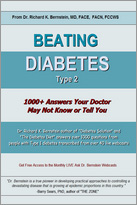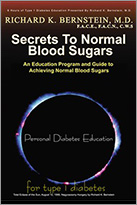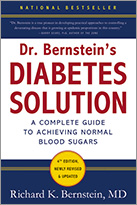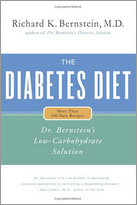There are two acute conditions that can develop from the combination of high blood sugars and dehydration. The first is called diabetic ketoacidosis, or DKA. It occurs in people who make virtually no insulin on their own (either type 1 diabetics or type 2 diabetics who have lost nearly all beta cell activity). Very low serum insulin levels, combined with the insulin resistance caused by high blood sugars and dehydration, result in the virtual absence of insulin-mediated glucose transport to the tissues of the body. In the absence of adequate insulin, the body metabolizes stored fats to produce the energy that tissues require to remain alive.
A by-product of fat metabolism is the production of substances called ketones and ketoacids. One of the ketones, acetone, is familiar as the major component of nail polish remover. Ketones may be detected in the urine by using a dipstick such as Ketostix (see Chapter 3, “Your Diabetic Tool Kit”). Ketones may also be detected on the breath as the aroma of an organic solvent, which is why unconscious diabetics are often mistaken for passed-out drunks.
Ketones and ketoacids are toxic in large amounts. More important, your kidneys will try to eliminate them with even more urine, thereby causing further dehydration. Some of the hallmarks of severe ketoacidosis are large amounts of ketones in the urine, extreme thirst, dry mouth, nausea, frequent urination, deep labored breathing, and high blood sugar (usually over 350 mg/dl).
The other acute complication of high blood sugar and dehydration, hyperosmolar coma, is a potentially more severe condition, and occurs in people whose beta cells still make some insulin. (“Hyperosmolar” refers to high concentrations of glucose, sodium, and chloride in the blood due to inadequate water to dilute them.) Diabetics who develop this condition usually have some residual beta cell activity, making enough insulin to suppress the metabolism of fats, but not enough to prevent very high blood sugars. As a result, ketones may not appear in the urine or on the breath. Because this condition most commonly occurs in elderly people, who do not become very thirsty when dehydrated, the degree of dehydration is usually greater than in ketoacidosis. Early symptoms of a hyperosmolar state include somnolence and confusion. Extremely high blood sugars (as great as 1500 mg/dl) have been reported in cases of hyperosmolar coma. Fluid deficit may become so severe that the brain becomes dehydrated. Loss of consciousness and death can occur in both the hyperosmolar state and in severe DKA.
The treatment for DKA and hyperosmolar coma includes fluid replacement and insulin. Fluid replacement alone can have a great effect upon blood sugar because it both dilutes the glucose level in the blood and permits the kidneys to eliminate excess glucose. Fluid also helps the kidneys eliminate ketones in DKA. Our interest here, though, is not in treating these conditions—this must be done by a physician or in a hospital—but in preventing them.




